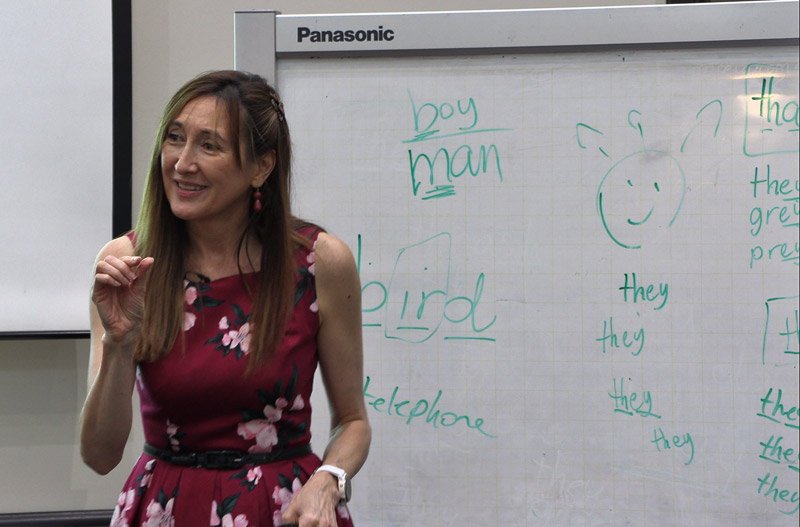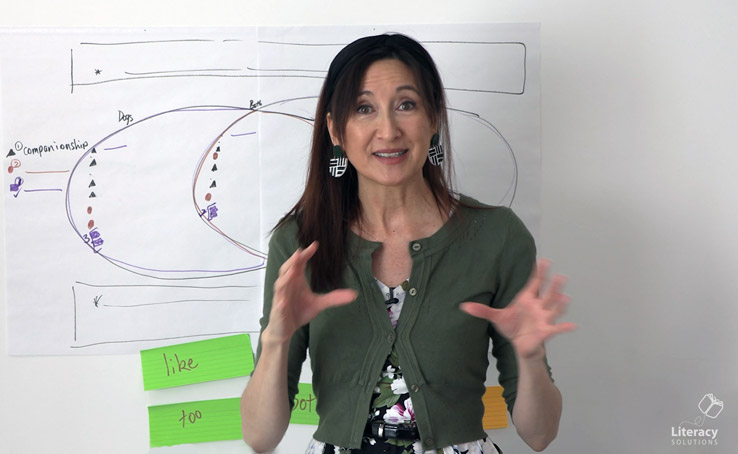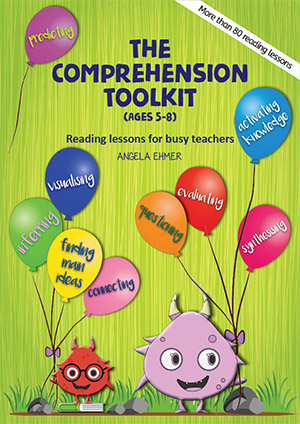The Benefits of Difficult Texts for Young Readers
Take advantage of more difficult texts in English and across the curriculum. We know that frequent, short bursts of explicit instruction produce powerful outcomes. We also know that students’ literacy skills and knowledge underpin the synthesis of new content across other key learning areas. Add to this, that the bulk of the texts students will be required to read, respond to and craft in secondary school are non-literary, and we are prompted to ask what this should mean in terms of planning and teaching in primary.
Core text books in secondary tend to be topic specific and highly specialised in comparison to texts read in primary schools. Core text books may contain unfamiliar features such as figures, guide questions or abstracts which may not be easily interpreted by some students, particularly those reading below the average in their cohorts.
So what can we do to prepare students for more challenging texts? A few quick thoughts…
Preparing students for more challenging texts
- Use more difficult texts across the curriculum to explicitly teach for literacy skills, knowledge and processes. For example, highlight ways to infer word meanings while reading the history text. On a science text, teach students how to recognise a top level structure, such as compare/contrast, and highlight the way this helps a reader to organise information to better construct meaning.
- Teaching from more difficult texts provides opportunities to frequently expose students to reading materials beyond their actual reading levels, build understandings around more complex ideas, demonstrate how to interpret ideas when aspects of the text are difficult or unfamiliar and deconstruct a wider range of texts and text types.
- Taking similar examples into small group lessons enables teachers to target support for small groups and individuals as needed and gives students an opportunity to apply what they have learned in a timely manner.
What other texts may be deemed hard? Some standardised reading tests such as the NAPLAN reading magazine are difficult for many students operating at lower reading levels.
What can we do to assist? A few more thoughts …
Assisting students comprehend the NAPLAN magazines
- Again, teach across all subject areas. There are no text types in the NAPLAN magazines that students have not seen across the curriculum or in real life reading episodes.
- Highlight the purpose of different texts, including diagrams, flowcharts, tables, etcetera, which commonly appear within other texts. If students understand why texts are constructed, they are easier to deconstruct. On a less familiar text, students should be prompted to ponder why someone would craft or create a text like this. This type of reflection supports students to understand the purpose of a text. Knowing what an author is trying to achieve, helps the reader to understand their role during and after reading.
- Teach students to activate their prior knowledge. As a result of browsing the magazine, many students become worried. Rather than recognising what they do know, they think about what they don’t know. Students must recognise text types, topics and ideas and recall what they already know about them. Some students must be prompted to consciously recall what they know. If teaching students to activate knowledge, do so frequently. Most lessons could begin with a quick ‘think, pair, share’ of what was learned or applied in the last lesson. Importantly, this must become automatic for students. They must independently activate their knowledge; no prompting.
- Use examples of real life texts, similar to those used in NAPLAN magazines, as whole class reading texts, or guided reading texts. During a science lesson, a diagram could be examined, analysed, deconstructed and discussed as a modelled reading lesson, or something similar used as a guided reading text. Readers struggling to decode words are provided with strong visual supports on these types of texts and these assist the reader to construct meaning.
- Integrate oldies, but goodies, like the Three Level Guide (Morris, A. & Stewart-Dore, N. 1984) into your repertoire. Don’t feel compelled to construct a formal written guide; use strategies like this, as a strategic tool to prompt for thought provoking, rich discussions. Modify questions or statements to achieve specific teaching/learning goals. If you observe students find it difficult to justify responses if synonyms or figurative language are used, thread these through your explicit teaching episodes.
Read up on The Three Level Guide:
Morris, A. & Stewart-Dore, N. (1990). Learning to Learn from Text. Effective Reading in the Content Areas. North Ryde, NSW: Addison-Wesley
Good luck!





What you have tried to explain is good, however it is a bit simplistic. To make the links between what students already know and activate it, takes time and discussion. I would use a KWL as wellas Think, pair, share,probably on a computer so that you can cut and paste what you have learnt into the Know column in preparation for next text. I would use several different texts on the same topic to give students time to think through facts and vocabulary and make connections which would lead to a deeper understanding. One question I would ask is”What is getting in the way of you understanding this text?” Often students may not even realise or have not bothered to think about what is blocking their ability to infer and teachers’ questions can help them.
The explicit teaching of how to navigate a core text is certainly an area we are addressing in our ‘Jump start to Junior Secondary’ program. The decoding of unfamiliar features such as abstracts, figures, guide questions needs to be modelled – specifically as to how they as readers may use them to enhance their abililty to construct meaning. It is essential to expose students to a variety of texts across all subject areas.
Further questions I would pose to students regarding the key to understanding the purpose of the text would be quite simplistic. What message does the author have for the audience? Who are the audience?
It is vital to explicitly model how to activate prior knowledge. Students need to have automaticity with this skill and utilise it with each new text.
epickering: You raise some important points.
Thank you for drawing attention to think, pair, share, which is just one example of promoting active involvement and synergistic learning. There are limitless ideas for activating knowledge and a reliance on any single strategy, or a limited group, can adversely impact learning.
Too often, students rely on teachers to activate and build knowledge. Learners should be highly active in recalling what they know and recognising how it relates to what is being learned. If students continue to struggle to activate their knowledge, the teacher will carefully observe student behaviour in order to make informed judgments about how to explicitly teach, coach and develop mastery of this important step.
As you have mentioned, it is helpful to use a wide range of strategies and tools. The KWL is a useful tool and may be included along with a variety of other effective strategies. We should bear in mind that these aids should be short term supports. It is important to wean students off supports like the KWL; we want to avoid creating a dependency on a support or scaffold. Students should understand that the KWL is merely an organiser which reminds them to apply the knowledge that proficient readers do. Proficient readers, however, do this without aids and this is our aim for all readers.
Ultimately the thinking required for a KWL should become automatic; with students not even realise they are activating knowledge (K), anticipating ideas and developing expectations (W) and remembering or synthesising what has been learned (L).
As you’ve noted, activating prior knowledge is difficult for some students. Explicit mini lessons highlighting ‘what to do’ and ‘how to do it’ may be required to build skills and knowledge in this area. I’ll endeavour to write a follow up post on this topic.
It makes sense to expose students to a wider range of reading materials and the strategies you suggest seem plausible. One concern is where do you get multiple copies of such texts or do we photocopy specific pages from existing texts?